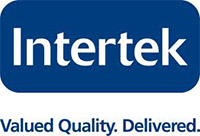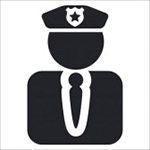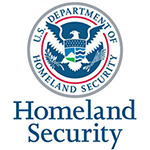 I recently had the privilege of speaking with Tom Connaughton, LLS global director of Intertek, a laboratory testing, outsourcing, consulting, cargo inspection and certification provider that formally entered the security industry in 2005 under the life and safety umbrella. Our discussion lead us through three vertical markets in which the security industry plays a vital role as well as how security professionals can help people embrace the evolving security industry.
I recently had the privilege of speaking with Tom Connaughton, LLS global director of Intertek, a laboratory testing, outsourcing, consulting, cargo inspection and certification provider that formally entered the security industry in 2005 under the life and safety umbrella. Our discussion lead us through three vertical markets in which the security industry plays a vital role as well as how security professionals can help people embrace the evolving security industry.
Government security
 Focusing specifically on law enforcement, it seems that police are shifting toward the use of video surveillance to aid in fighting crime.
Focusing specifically on law enforcement, it seems that police are shifting toward the use of video surveillance to aid in fighting crime.
Connaughton offered the following example explaining that three perpetrators are robbing a store, and only one police officer is dispatched to respond. Not only is this putting the officer in a dangerous situation, but one officer is likely not able to apprehend three people. Had a surveillance camera been installed in the store, police could have actively monitored the situation and dispatched the appropriate number of officers to handle the situation safely and effectively.
Police also have a legitimate need for a “verified alarm” to help rule out false alarms.
“Video is helping with false alarm issues,” said Connaughton. “This enables the police to more actively pursue legitimate alarms like domestics and fights.”
And, while there are IP, analog, and hybrid cameras on the market, it is important to realize that all three have a function.
“Technology is always evolving, but older systems are still needed,” explained Connaughton. “Even if a camera produces a shadowy figure, this still helps you know something is going on.”
Homeland security
 Labored with the not-so-easy task of keeping U.S. borders safe and secure, usable, security-based technology is available to help the Department of Homeland Security. One such tool is thermal imaging cameras that allow agents to “see” hidden people.
Labored with the not-so-easy task of keeping U.S. borders safe and secure, usable, security-based technology is available to help the Department of Homeland Security. One such tool is thermal imaging cameras that allow agents to “see” hidden people.
“The use of thermal imaging cameras along the U.S. border help the overwhelmed border patrol,” said Connaughton.
These cameras help to minimize the task of physically searching all vehicles and vessels that enter and exit our borders.
School Security
 The U.S. has had its share of school violence in the past few months, so now that school’s out for summer break, it’s the perfect time for schools to re-evaluate their campuses to ensure safety and security during the upcoming school year.
The U.S. has had its share of school violence in the past few months, so now that school’s out for summer break, it’s the perfect time for schools to re-evaluate their campuses to ensure safety and security during the upcoming school year.
One way for schools to assess the overall safety and security of their campus is by using UL Standards. These standards are based on safety research and science, and serve as a benchmarking tool to identify levels of security. Level 1 is considered “good,” level 2 “better” and level 3 “best.” Obviously, campuses should strive for a level 3; however, a level 3 is no guarantee that a campus is violence-proof.
“[Unfortunately], if someone’s motivated, they will get where they want to be,” said Connaughton. Once the “bad guy” is inside the school, time is of the essence to provide adequate protection to students, faculty, staff and volunteers.
Using security solutions as ‘currency,’ “security professionals must figure how much time they can ‘buy’ for the police to respond” by utilizing their products and services during times of emergency,” said Connaughton.
However, due to budgetary constraints, not every school has huge amounts of money to spend on security solutions.
“[Ultimately], it (meaning safety) all boils down to what extent, and at what cost, schools are able to invest [in security].”
Embracing change in the security industry
 Any type of change can be difficult. In general, people start thinking about the “what-ifs” associated with change, activating fear, which in turn, becomes a key driver of choices. Therefore, as the security industry evolves and new technologies are introduced, it is important to properly educate people and provide proof to help alleviate some of the fear.
Any type of change can be difficult. In general, people start thinking about the “what-ifs” associated with change, activating fear, which in turn, becomes a key driver of choices. Therefore, as the security industry evolves and new technologies are introduced, it is important to properly educate people and provide proof to help alleviate some of the fear.
“It only takes one horror story to set a technology trend back days, months, years. The key is to make sure and prove that technology will do what it says it will do,” said Connaughton.
Intertek supports the global economy by being able to certify based on U.S., Canadian and European standards. In fact, Intertek is the only accredited lab located in the U.S. that is able to certify based on European standards.
The company also prides itself in working collaboratively with security professionals to create a successful partnership.
“We strive to understand the needs and challenges to build a better ‘mouse trap,’ then we help get security products to the market. It takes time and money for a company to develop, test, market and sell a product and service. If a new innovative technology is sitting in a laboratory [waiting to be tested] no one can benefit from this technology,” explained Connaughton.